|
SCICEX
The Science Ice Exercise
(SCICEX) program is a collaboration between the U.S. Navy and the marine
research community to utilize nuclear-powered submarines for the study of
the Arctic Ocean. Unlike surface ships, submarines have the unique and
valuable ability to operate and take measurements regardless of sea ice
cover and weather conditions. The goal of the program is to acquire
comprehensive data about Arctic sea ice, water properties, and bathymetry.
SCICEX was officially
founded in 1994 after a successful feasibility test that took place in
1993 where civilian scientists joined naval personnel on the submarine to
acquire scientific data. SCICEX data provide an extraordinary volume of
ice draft measurements from upward-looking sonar and depth soundings from
side-scan and other sonar. These measurements constitute one of the most
complete mappings available of ice thickness in the central Arctic Basin
and provide orders of magnitudes more bathymetry data of the region than
previously acquired.
SCICEX is important because
it adds critical pieces to the overall information needed to analyze sea
ice and ocean dynamics — ice thickness and bathymetry data in particular
but also chemical, biological, and physical oceanographic data. With the
success of the initial project in 1993, the U.S. Navy and the National
Science Foundation (NSF) signed a Memorandum of Agreement (MOA) in 1994
that called for five more dedicated SCICEX missions. The dedicated SCICEX
cruises occurred in 1995, 1996, 1997, 1998, and 1999.
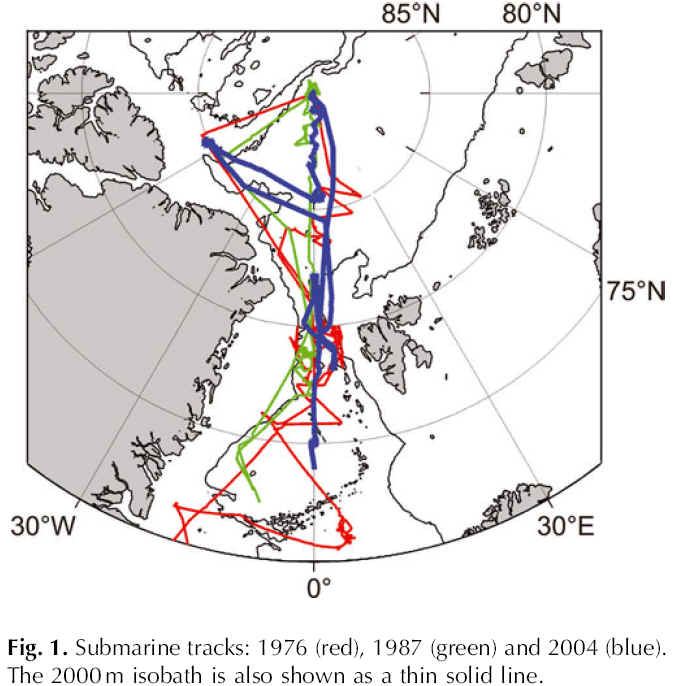
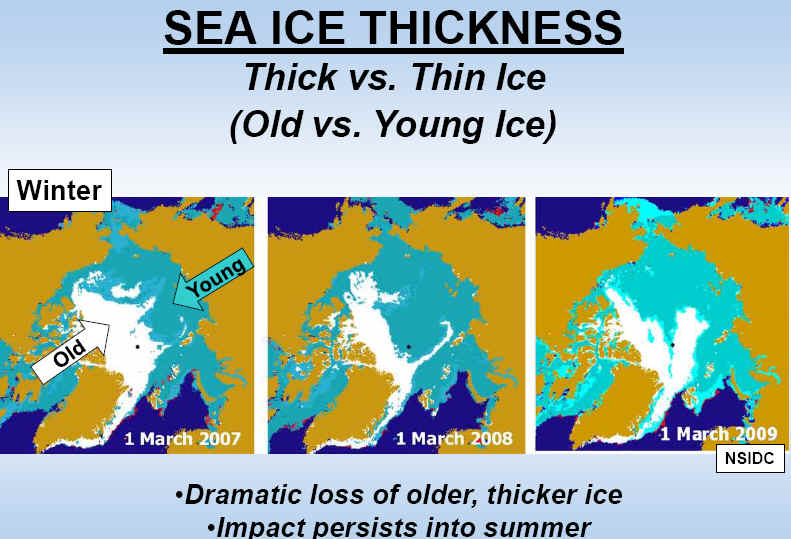
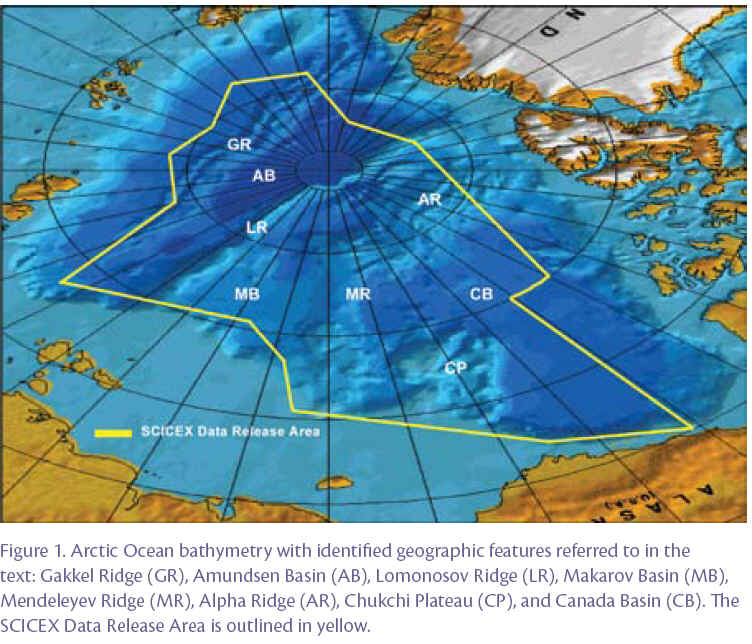
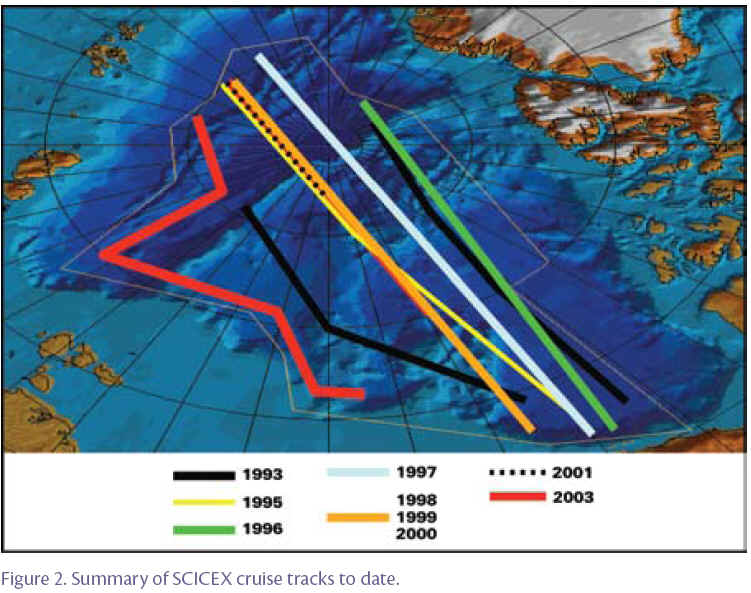
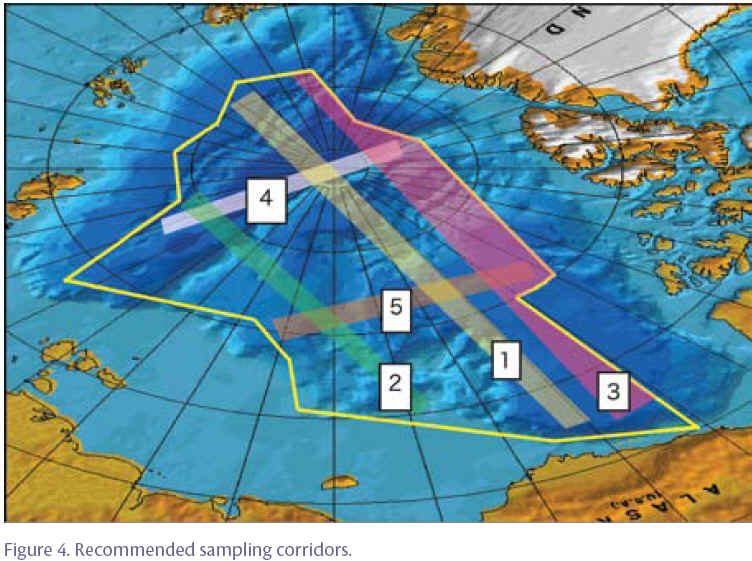
Data from
SCICEX cruises are central to improving scientific understanding of the
complex Arctic Ocean environment and to defining the scope of recent
changes. These data also contribute to the safety, stability, and success
of Arctic military and civilian marine operations.
• Sea Ice
Thinning. Profiles of sea ice draft obtained from the upward-looking
sonars of submarines transiting the Arctic Ocean have provided the bulk
of our current knowledge of ice thickness, and how it varies over the
Arctic basin. By comparing ice draft data collected by SCICEX with
previously published data, scientists established that sea ice has
thinned significantly within the Data Release Area between 1950–1970 and
the 1990s.
•
Bathymetry. SCICEX data contributed to the new International Bathymetric
Chart of the Arctic Ocean, which led to first-order changes in the
mapped positions and depths of major bathymetric features. Knowledge of
seafloor topographic features is important for studies of Arctic Ocean
circulation, seafloor volcanism, and hydrothermal circulation, and has
informed a scientific ocean drilling expedition dedicated to
understanding Arctic climate over the past 65 million years
Warming of
Atlantic Waters. Hydrographic data provide definitive, synoptic evidence
of upper ocean circulation pathways, and evidence of warming and
penetration of Atlantic water as it propagates along basin peripheries
and ridges. As the SCICEX data archive has grown, it has played a
greater role in climate and modeling studies to validate model results
of temperature and salinity distributions. • O cean Acidification.
Chemistry data show that the rate of CO2 uptake by the Arctic Ocean is
twice the average for the global ocean, leading to acidification of the
Arctic Ocean.
• Biological
Response to Reduced Summer Ice. Sensor estimates of chlorophyll and
oxygen reflect the response of Arctic productivity to decreased sea ice
extent during summer. Measurements of organic material help to define
transport pathways of carbon from shelves to basins. Current biological
approaches can characterize the microbial communities that impact the
ecological dynamics and biogeochemical fluxes of the Arctic.

|








